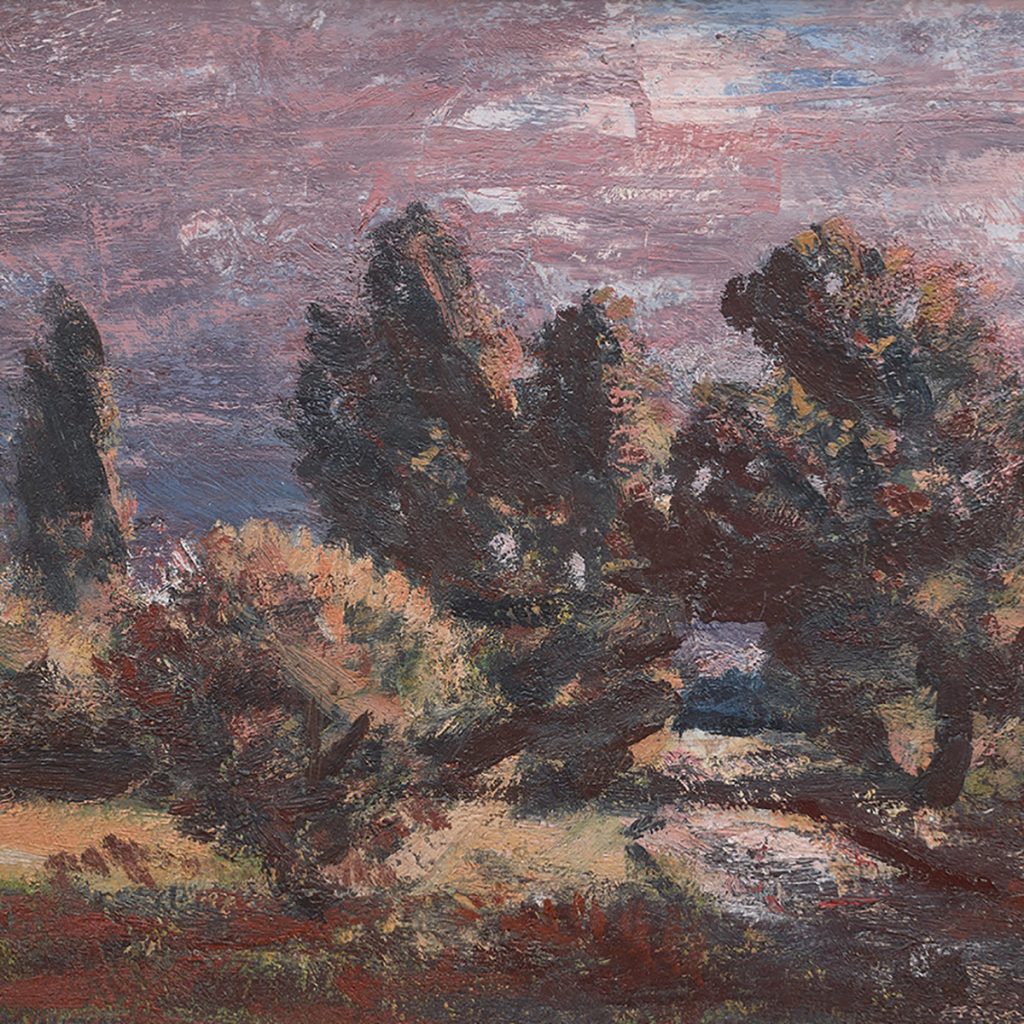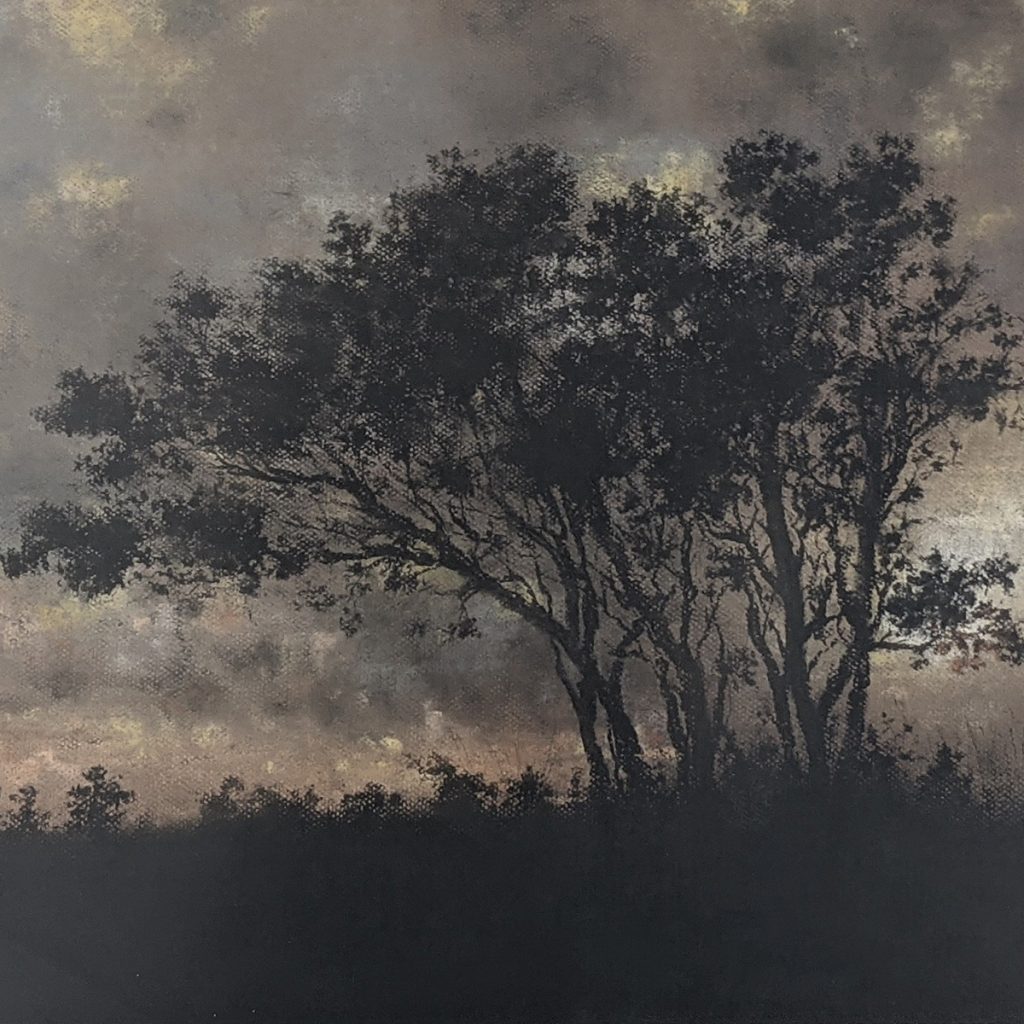EXHIBITION
The In Between
Homer Watson & Abdul Khaliq
June 30 – November 5, 2023
Watson, Cayley & Ferrie Galleries
“It is the fleeting moods or transitory effects that I like best. Even in a woodland where the sunlight showers down shafts of light, the effect is but momentary; but the beauty once seen leaves such an impression on the mind it is not forgotten.” – Homer Watson
Over the course of his career, Homer Watson grew to appreciate the liminal times of day, where landscapes are faintly illuminated, and viewers are forced to appreciate the feeling of a scene rather than the details within it. This interest in the transitory periods at dawn and dusk may have been influenced by his interest in spiritualism, in which these periods represent a time when the veil between the living and the dead is thin. In his later career, Watson explored this theme to a greater extent, incorporating sunsets, fading daylight and reduced visibility to immerse the viewer into the landscape in a way that his earlier style had never accomplished.


This theme continues to act as a source of inspiration for artists, as demonstrated in the work of Stratford artist, Abdul Khaliq. Inspired by many of the same local landscapes memorialized on Homer Watson’s canvases, Khaliq captures his surrounding landscape during these transitory periods. Using a limited palette, his pieces convey a moody and mystical effect, reminiscent of the work of Homer Watson. With many parallels in their careers, both self-taught landscape painters, Khaliq and Watson both utilize the “in between” periods through the day to encourage their viewer to appreciate the subtle beauty and mystical nature of their surrounding landscapes.











